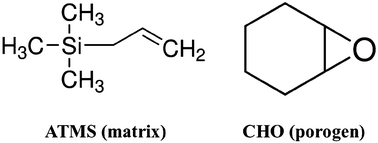Nanoporous SiCOH/CxHy dual phase films with an ultralow dielectric constant and a high Young's modulus†
Abstract
We used

* Corresponding authors
a
National Research Lab. For Organic Opto-Electronic Materials, Department of Chemical and Biomolecular Eng. (BK-21), Korea Advanced Institute of Science and Technology, Daejeon 305-701, Korea
E-mail:
heetae@kaist.ac.kr
Fax: +82 42 350 3910
Tel: +82 42 350 3931
b
KCC Central Research Institute, 83 Mabook-dong, Giheung-gu, Yonginsi, Gyunggi-do 446-912, Korea
E-mail:
kongku@kccworld.co.kr
c Vacuum Center, Division of Advanced Technology, Korea Research Institute of Standards and Science, Daejeon 305-340, Korea
We used

 Please wait while we load your content...
Something went wrong. Try again?
Please wait while we load your content...
Something went wrong. Try again?
J. Park, J. K. Choi, C. J. An, M. L. Jin, S. Kang, J. Yun, B. Kong and H. Jung, J. Mater. Chem. C, 2013, 1, 3414 DOI: 10.1039/C3TC00587A
To request permission to reproduce material from this article, please go to the Copyright Clearance Center request page.
If you are an author contributing to an RSC publication, you do not need to request permission provided correct acknowledgement is given.
If you are the author of this article, you do not need to request permission to reproduce figures and diagrams provided correct acknowledgement is given. If you want to reproduce the whole article in a third-party publication (excluding your thesis/dissertation for which permission is not required) please go to the Copyright Clearance Center request page.
Read more about how to correctly acknowledge RSC content.
 Fetching data from CrossRef.
Fetching data from CrossRef.
This may take some time to load.
Loading related content
